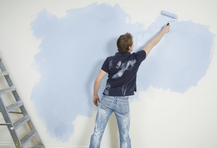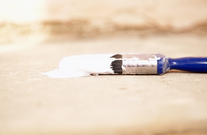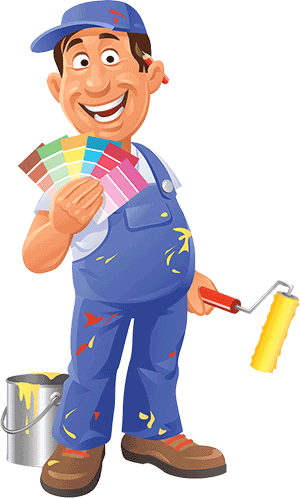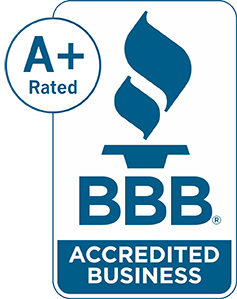
Painting the exterior of your house can be exciting (yeah, a new look!) and daunting (mercy, it’s not as easy as it looks!).
The truth when exterior painting is somewhere in between. Yes, it’s nice to update the exterior house paint you’ve been staring at for years, but it is not an easy task.
Before tackling any task as involved as exterior painting, remember to do your research. Internet searches for exterior house paint ideas or exterior painting tips can be an enormous help. Also consider consulting painting companies in Winnipeg that are specialized in exterior painting.
They can help and of course, if you’re not up to doing it yourself, they’ll be able to not only do the job, but even give you ideas you maybe never thought of, like using different types of exterior house paint, or even using materials like stucco, for a look which will make your house the envy of the neighborhood. That’s what we all want, isn’t it?
One exceedingly important point to remember before starting, remember the weather. Depending on the size of the house and how much help you have, the job itself can take a few days and beyond. So you’ll want to pick a time of year where it doesn’t rain that much, check the forecast diligently, and plan accordingly.
Also allow an extra day or so for the inevitable unforeseen delays. And have materials to cover up your equipment on standby in case a surprise pop-up shower should appear.
The truth when exterior painting is somewhere in between. Yes, it’s nice to update the exterior house paint you’ve been staring at for years, but it is not an easy task.
Before tackling any task as involved as exterior painting, remember to do your research. Internet searches for exterior house paint ideas or exterior painting tips can be an enormous help. Also consider consulting painting companies in Winnipeg that are specialized in exterior painting.
They can help and of course, if you’re not up to doing it yourself, they’ll be able to not only do the job, but even give you ideas you maybe never thought of, like using different types of exterior house paint, or even using materials like stucco, for a look which will make your house the envy of the neighborhood. That’s what we all want, isn’t it?
One exceedingly important point to remember before starting, remember the weather. Depending on the size of the house and how much help you have, the job itself can take a few days and beyond. So you’ll want to pick a time of year where it doesn’t rain that much, check the forecast diligently, and plan accordingly.
Also allow an extra day or so for the inevitable unforeseen delays. And have materials to cover up your equipment on standby in case a surprise pop-up shower should appear.
Exterior House Paint, Which Kind You Should Buy
So let’s take a look at the different kinds of exterior house paint you should consider, because sometimes cutting corners on the type of paint could cost you in the long run.
The two types of exterior house paint you should consider are water-based and oil-based. Water-based paints are the most common type, but oil-based can be used for most metal surfaces and some types of wood.
Water-based paints, to break it down, consists of water, the colorant (or pigment) and should only be used with water-based primer (if used). Benefits of this type of exterior paint is that it dries quicker with very little odor, it contracts and expands along with the siding of the house and it won’t absorb moisture, which is great so it won’t peel or crack.
One other point is using latex varieties (especially acrylic and vinyl-acrylic binders) is advisable. This exterior paint simply withstands mother nature much better.
Oil-based paints are not ideal because the colorant (or pigment) will dry quicker and the resin used in the paint will crack or peel. The benefits are it adheres to the surface better, ideal for metals that are known to rust, chalky surfaces and some stains or woods known to bleed. It will dry slower (8-24 hours).
The two types of exterior house paint you should consider are water-based and oil-based. Water-based paints are the most common type, but oil-based can be used for most metal surfaces and some types of wood.
Water-based paints, to break it down, consists of water, the colorant (or pigment) and should only be used with water-based primer (if used). Benefits of this type of exterior paint is that it dries quicker with very little odor, it contracts and expands along with the siding of the house and it won’t absorb moisture, which is great so it won’t peel or crack.
One other point is using latex varieties (especially acrylic and vinyl-acrylic binders) is advisable. This exterior paint simply withstands mother nature much better.
Oil-based paints are not ideal because the colorant (or pigment) will dry quicker and the resin used in the paint will crack or peel. The benefits are it adheres to the surface better, ideal for metals that are known to rust, chalky surfaces and some stains or woods known to bleed. It will dry slower (8-24 hours).
What Type of Exterior Paint Finish Should You Buy?

You’ll also need to consider the finish, especially when you get to the wood trim of the house, the gutters, the steps, masonry, pools and your roof (if applicable).
When it comes to gutters, try oil and latex paints. For masonry, latex is key, particularly for shingles, stucco and concrete. Floors and porches, all-acrylic latex is best, for pools you might consider an expert, because there is a specialized treatment and primers needed, but if you must, look for cement-based paint.
And for roofs, an acrylic-latex blend should do the trick, but look for an exterior paint that can handle the inevitable mildew/algae sure to accumulate on the surface over time.
When it comes to gutters, try oil and latex paints. For masonry, latex is key, particularly for shingles, stucco and concrete. Floors and porches, all-acrylic latex is best, for pools you might consider an expert, because there is a specialized treatment and primers needed, but if you must, look for cement-based paint.
And for roofs, an acrylic-latex blend should do the trick, but look for an exterior paint that can handle the inevitable mildew/algae sure to accumulate on the surface over time.


